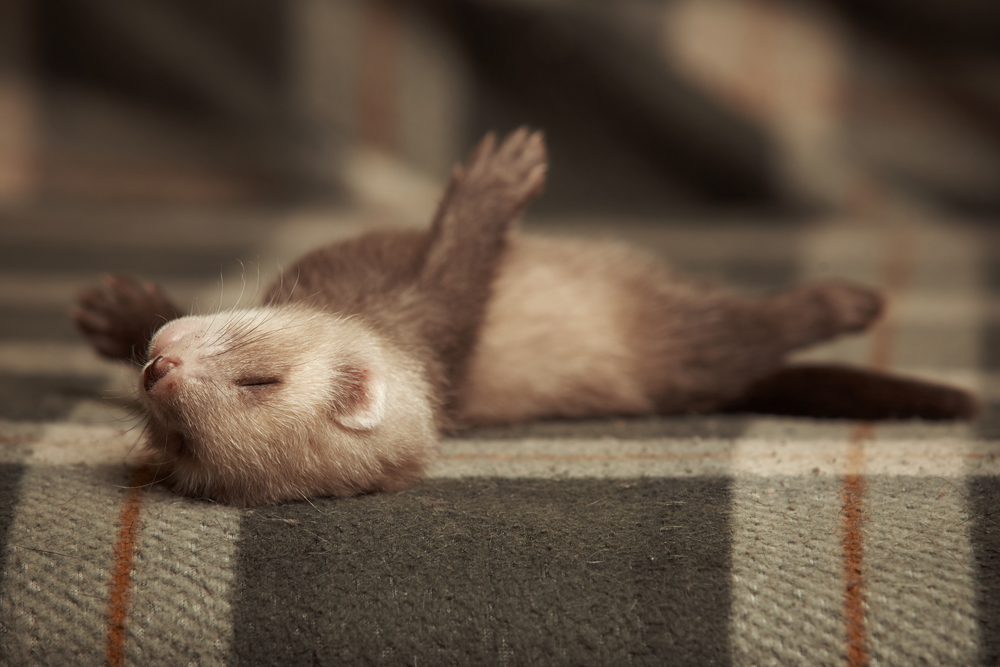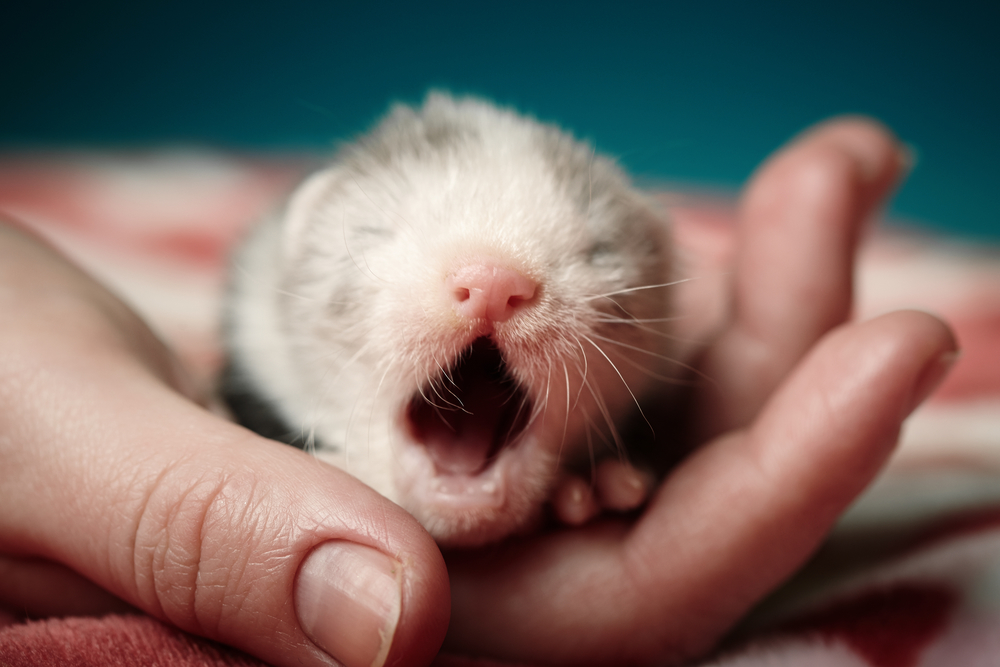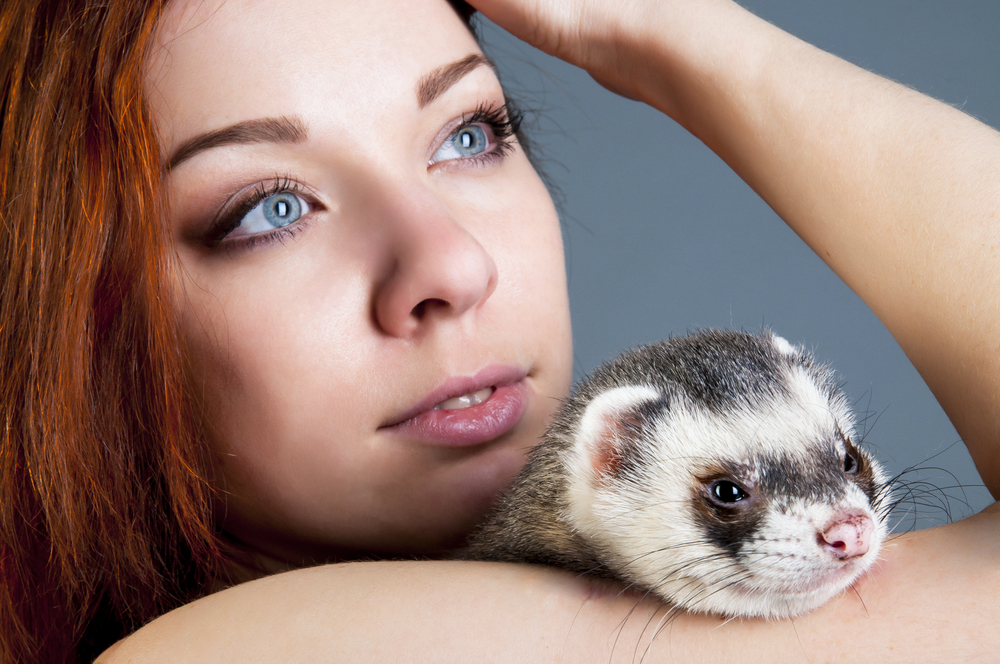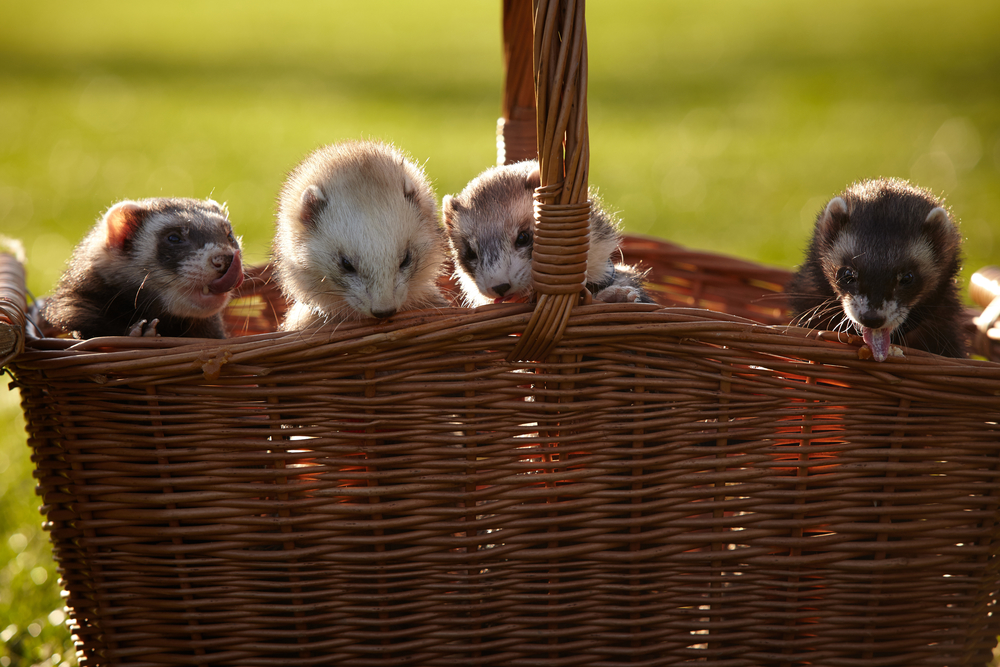Ferret breeding is best left to experienced professionals, and it is advisable that anyone considering keeping a ferret as a pet have the animal spayed or neutered to prevent unwanted pregnancy.
It is best to neuter male ferrets, called hobs, at about seven or eight months, before they come into season for the first time. Neutering will all but eliminate the hob’s distinct musky odour, which many people find unpleasant. Neutered hobs are also easier to handle, and will be much less aggressive toward other males. The procedure is quick and can be done right in a veterinarian’s office. Unless rare serious complications arise, most hobs are allowed to return home almost immediately after surgery.
Female ferrets, called jills, should also be spayed before coming into their first season, usually around eight months. If a jill is in season already, the procedure should be postponed or a hormone injection should be administered to take the jill out of season. Spaying a jill in heat can cause severe blood loss during the procedure, which can lead to death. It is very important that jills that are not intended to be bred are spayed. Intact jills only ovulate after mating, and will remain in heat until they are impregnated. This can lead to a serious condition called aplastic anaemia which, if allowed to continue, will eventually cause death. While spaying is a relatively simple procedure, and most jills are able to return home the same day, there are alternatives to surgery. The first option is a “jill jab” — a hormone injection given by a veterinarian to take a jill out of season. The second option is to have the jill mated by a male that has undergone vasectomy. This will take the jill out of season, but will not result in pregnancy.












